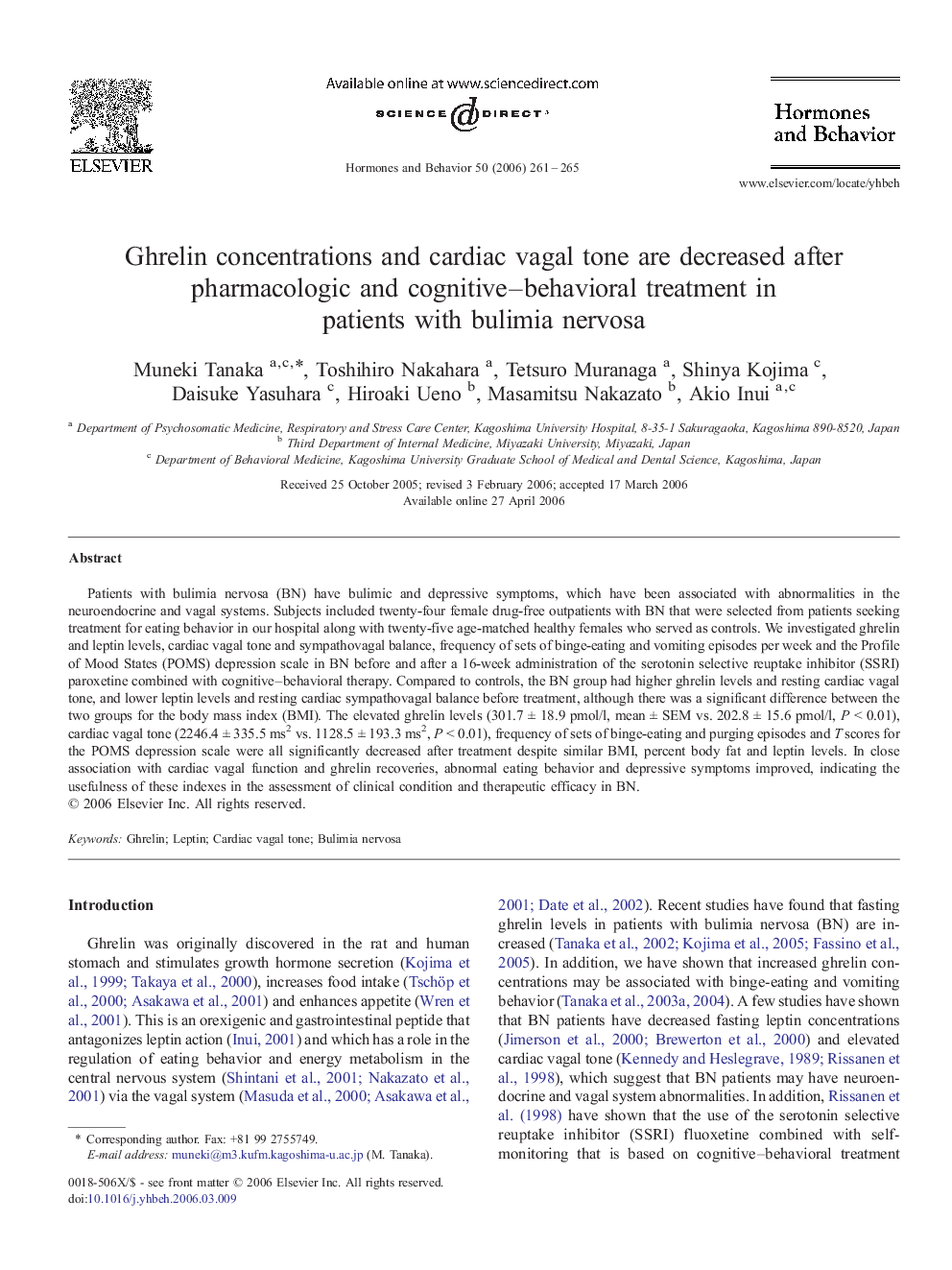| Article ID | Journal | Published Year | Pages | File Type |
|---|---|---|---|---|
| 323923 | Hormones and Behavior | 2006 | 5 Pages |
Patients with bulimia nervosa (BN) have bulimic and depressive symptoms, which have been associated with abnormalities in the neuroendocrine and vagal systems. Subjects included twenty-four female drug-free outpatients with BN that were selected from patients seeking treatment for eating behavior in our hospital along with twenty-five age-matched healthy females who served as controls. We investigated ghrelin and leptin levels, cardiac vagal tone and sympathovagal balance, frequency of sets of binge-eating and vomiting episodes per week and the Profile of Mood States (POMS) depression scale in BN before and after a 16-week administration of the serotonin selective reuptake inhibitor (SSRI) paroxetine combined with cognitive–behavioral therapy. Compared to controls, the BN group had higher ghrelin levels and resting cardiac vagal tone, and lower leptin levels and resting cardiac sympathovagal balance before treatment, although there was a significant difference between the two groups for the body mass index (BMI). The elevated ghrelin levels (301.7 ± 18.9 pmol/l, mean ± SEM vs. 202.8 ± 15.6 pmol/l, P < 0.01), cardiac vagal tone (2246.4 ± 335.5 ms2 vs. 1128.5 ± 193.3 ms2, P < 0.01), frequency of sets of binge-eating and purging episodes and T scores for the POMS depression scale were all significantly decreased after treatment despite similar BMI, percent body fat and leptin levels. In close association with cardiac vagal function and ghrelin recoveries, abnormal eating behavior and depressive symptoms improved, indicating the usefulness of these indexes in the assessment of clinical condition and therapeutic efficacy in BN.
